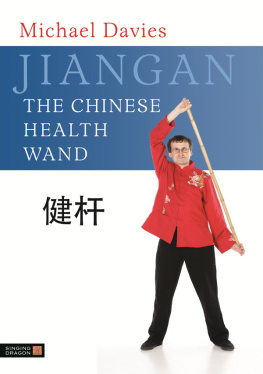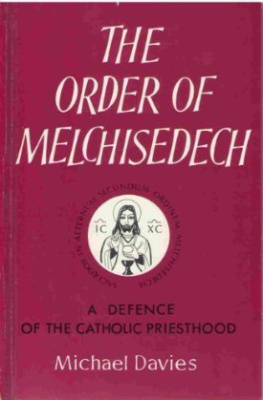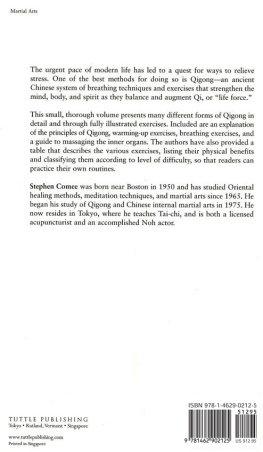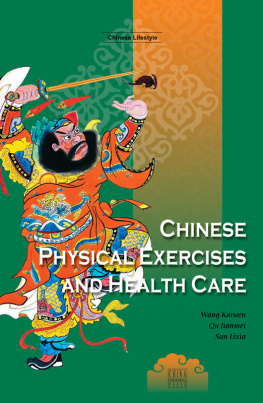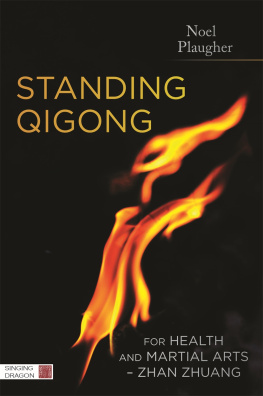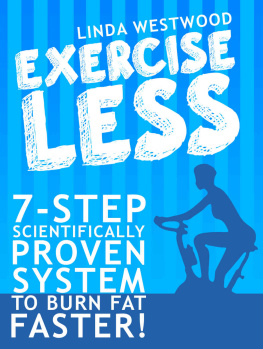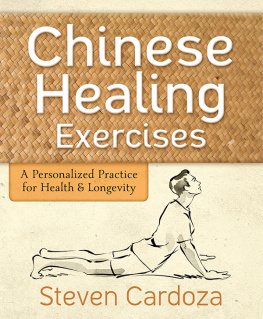It is always refreshing to deal with a different and unusual approach to Chinese hygienic exercise. Michaels knowledge of and skill in the mysteries of Chinese Health Wand make him unique in the Tai Chi community. His publishers are to be congratulated in making this rare material available to the public. I wish the book every success.
Dan Docherty, Chairman of the Tai Chi Union for Great Britain, UK
We have more and more need in these frenetic times for the wisdom of Chinese medicine. Michael shows very clearly how Jiangan exercises can be used to benefit ourselves. I regularly see, in my own practice, how peoples health and vitality can be transformed by following such exercise regimes. I can wholeheartedly recommend this book for those who want to become more healthy and for those who want to maintain their health.
Dr Stephen Gascoigne, medical doctor, acupuncturist and herbalist, UK and Ireland
of related interest
Eternal Spring
Taijiquan, Qi Gong, and the Cultivation of Health, Happiness and Longevity
Michael W. Acton
ISBN 978 1 84819 003 0
Managing Stress with Qigong
Gordon Faulkner
Foreword by Carole Bridge
ISBN 978 1 84819 035 1
The Yang Tij 24-Step Short Form
A Step-by-Step Guide for all Levels
James Drewe
ISBN 978 1 84819 041 2
You Are How You Move
Experiential Chi Kung
Ged Sumner
ISBN 978 1 84819 014 6
JIANGAN
THE CHINESE HEALTH WAND
Michael Davies

LONDON AND PHILADELPHIA
The photographs in the book have been kindly provided by Rob Purbrick of Purpix Media and Photography (www.purpix.co.uk)
First published in 2011
by Singing Dragon
an imprint of Jessica Kingsley Publishers
73 Collier Street
London N1 9BE, UK
and
400 Market Street, Suite 400
Philadelphia, PA 19106, USA
www.singingdragon.com
Copyright Michael Davies 2011
All rights reserved. No part of this publication may be reproduced in any material form (including photocopying or storing it in any medium by electronic means and whether or not transiently or incidentally to some other use of this publication) without the written permission of the copyright owner except in accordance with the provisions of the Copyright, Designs and Patents Act 1988 or under the terms of a licence issued by the Copyright Licensing Agency Ltd, Saffron House, 610 Kirby Street, London EC1N 8TS. Applications for the copyright owners written permission to reproduce any part of this publication should be addressed to the publisher.
Warning: The doing of an unauthorised act in relation to a copyright work may result in both a civil claim for damages and criminal prosecution.
Library of Congress Cataloging in Publication Data
Davies, Michael.
Jiangan-- the Chinese health wand / Michael Davies.
p. cm.
ISBN 978-1-84819-077-1 (alk. paper)
1. Wand exercises. 2. Exercise therapy. 3. Health. 4. Medicine, Chinese.
I. Title.
GV503.D38 2011
613.71--dc22
2011012108
British Library Cataloguing in Publication Data
A CIP catalogue record for this book is available from the British Library
ISBN 978 1 84819 077 1
eISBN 978 0 85701 050 6
Contents
Discovering the Chinese Wand Exercise (Jiangan)
While visiting Malaysia in 1981 I stayed at a cut-price chalet on the East Coast, a ramshackle building I shared with backpackers. My surroundings were certainly austere but had I the financial resources to stay in the nearby luxury hotel, I would have missed the opportunity to witness a nightly demonstration of a rare art. Each evening before the elderly Chinese caretaker brought out his camp bed to sleep in the little foyer of our building, I watched him perform a series of exercises with a bamboo pole about the length of a broom handle. He moved slowly and gracefully, bending, twisting, keeping the pole close to his body but sometimes circling and spiralling it around his head. At the time I had just begun learning Taiji (which is another word for Tai Chi) and so guessed that I was witnessing some form of internal Chinese exercise. I scribbled some hasty functional drawings of the old mans movements and showed my Taiji teacher on my return to London, who solved the mystery by producing a book titled Chinese Wand Exercise by Bruce L. Johnson, the American who discovered the obscure set of exercises in Shanghai in 1945.
In the summer of 2009 while attending several Taiji and Qigong seminars, it struck me that most of these events and indeed most martial arts classes begin with general warm-ups, stretching and breathing exercises that seem numerous but rather random. I wondered, half-seriously, whether a combined warm-up, stretching and breathing routine could be devised that was not only safe for beginners and advanced practitioners alike but also comprehensive in range and effect, consistent and based on scientific and logical sequence. This would certainly be a tall order. Yet according to a book gathering dust on my bookshelf for years, such a system has existed as long as Chinese civilisation itself. The book, one of many obscure titles on Chinese martial arts and philosophy I inherited from my teacher, was, of course, the Chinese Wand Exercise. Over the years I had only occasionally taken it from the bookshelf and flicked through the pages with mild interest. To be honest, the photos of exercises performed with a bamboo pole looked so formidable and challenging that I was hesitant to try them. But finally reading the book from cover to cover, it became clear that I had found the perfect warm-up and stretching routine for my own Taiji class. I was particularly intrigued by Johnsons claim that the system was the best exercise ever devised. Like many Taiji practitioners, I had always regarded Taiji as filling that role, but sometimes we need to re-evaluate long-held practices and beliefs, so I became a student of the Wand to test Johnsons claim. Over the following months I practised the Wand exercises diligently each day, using a wooden staff of the dimensions directed by Johnson and following his instructions to the letter. My research convinced me that regular practice of this art can produce the wonderful health benefits associated with internal health systems such as Yoga, Qigong and Taiji. I also realised that the Chinese Wand Exercise can be practised as a health system in its own right and has a unique methodology and philosophy. In fact, it has the potential to be more effective than any other type of daily exercise. Support for this extraordinary claim not only comes from the decades of anecdotal evidence from Johnsons students and my own experience but also can be logically deduced from the practices and methodology of the system.
Although these ancient exercises have much in common with Yoga, Qigong and Taiji, the main difference is that the complexity and depth of these other Eastern arts reflect their multifaceted aims, whether it be spiritual development, martial skill or healing specific internal organs. The Chinese Wand Exercise, which dates back many centuries perhaps thousands of years was created to be a simple but effective daily exercise regime that anyone can perform, a sort of Royal Canadian Air Force System of the ancient world, and has been subjected to centuries of development, trial and error and adaptation to reach a state of near perfection. It is true to say that other ancient Eastern systems have developed simplified exercise routines for everyday practice but only comparatively recently, so in the context of a daily regime they are not as tried and tested as the Chinese Wand Exercise. So what precisely are these exercises? Exercises can be split into two types: external and vigorous programmes that cannot be practised every day due to the danger of muscle fatigue and strain, and internal or therapeutic (sometimes called mind-body) exercises like Yoga, Taiji and Qigong which develop the inner self and can be practised every day of ones life without any ill effects. These internal or mind-body systems are part of our healthy daily regime, along with bathing and eating nutritious food, and can be considered nutrition for the body. The Chinese Wand Exercise certainly falls into this category. However, the system is also capable of delivering the body-shaping and conditioning effects associated with more physically robust exercises such as gym work. The ability to perform body-changing exercises every day without sore muscles or strain is a great advantage for those looking to lose weight or tone muscles. This remarkable feat is largely achieved by using the unique methodology of splitting each posture into graduated stages, each with its own breathing cycle, which prepares the muscles by gradually stretching them to minimise stress and strain. This makes the system probably the safest in existence. After we finish a session we do not feel tired or exhausted but energised, fresh and alert. The arts deep diaphragmatic breathing and easy-to-learn simple-to-practise movements form an integrated and complete daily maintenance regime. Muscles are strengthened and stretched gently, joints are opened and kept supple, the cardiovascular system is stimulated, blood circulation is improved and meditative focus relieves tension and activates the bodys healing energies. The exercises emphasise control, precision, centring the body, deep breathing and focus in mind and body. Movements are never performed rapidly or repeated excessively; instead, the focus is on gradual advancement and quality of movement, not quantity. The low impact nature makes it ideal for injury prevention and rehabilitation. The movements also precision-train the body to move efficiently with minimal impact on the body, which helps us relax even in the midst of a stressed environment. People take up internal mind-body exercises to feel more energetic, happier and more peaceful. But in the case of the Chinese Wand Exercise, fitter and slimmer can be added to the list.
Next page
